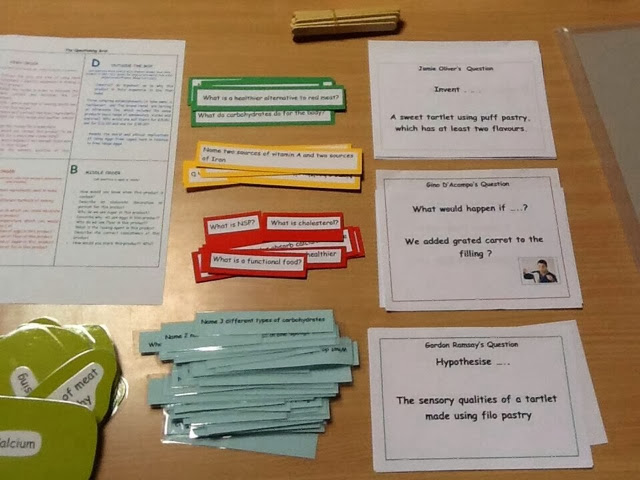The aim of this session is to feedback on the differentiation techniques we have used and how they have closed the gap. Additionally, we wanted to look at using differentiation to stretch our more able pupils without resorting to giving 'more of the same' or 'busy work'.
Connect the learningFor the starter, we encouraged our groups to get into their groups and discuss what differentiation techniques they have tried and what impact they have had on learning.
This proved to be invaluable as colleagues were able to share and critique ideas. One good idea came from colleague who demonstrated how he used direct task differentiation with his A Level class to ensure he stretched the top pupils while supporting the bottom. This can be seen below
Share new information
For this section, we all researched new ways of differentiating using the website seen below.
This inspired staff to think about and use different ways of differentiating
Search for meaning
We then discussed different ways we could use differentiation and encourage staff to research areas to stretch the more able pupils, in order to close the gap.
This activity resulted in some in depth discussions about ways in which staff at Rosset could effectively differentiate for the high achieves in order to give them the best possible chance they can to achieve, and exceed, their target levels.
One colleges summerised the idea of differentiating as such:"education is a journey and all pupils reach their final destination, it's just the more able sometimes need to be pushed into taking a different path".
Demonstrate understanding
For this section we introduced another website and asked colleagues to discuss ow could these ideas have impact education and to critique and reflection upon how their use of differentiation could have more impact. Again, this sparked some really good discussions with colleagues commenting on how they planned on using new ideas and how they could reinvent tried and tested methods to further close the gap.
Review
To end the session, we asked staff to continue researching and implementing different ways if differentiating and to come to next session prepared to present their findings.
Overall the three TLC groups found the session useful as it provided an arena for the sharing and collaborating of ideas that could then be taken away and implement in their lessons.


















































